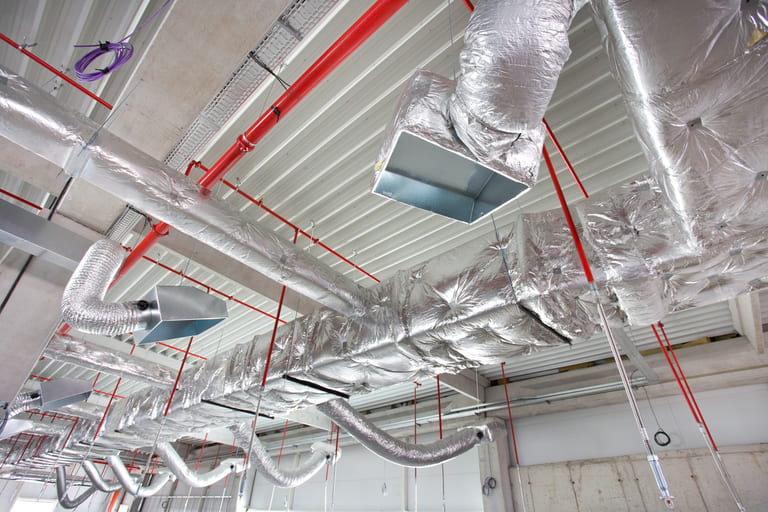

Taiyo Kogyo Column
What is the impact of the 2024 problem on mileage in the logistics industry? Even how to improve operational efficiency is explained.

The problem of fatal accidents and overwork deaths due to long working hours has come to the fore. Due in part to these factors, it has been decided that restrictions will be placed on driver overtime hours from 2024 onward. However, many businesses are unsure about how to implement specific measures. This article provides a detailed description of the 2024 problem as well as seven measures to solve the problem.
What is the "2024 problem" in the logistics industry?

The 2024 issue is a major change in the logistics industry. General companies were the first to start limiting overtime hours due to work style reforms, and the logistics industry will start the same in 2024. This issue is explained below.
Overtime hours are capped.
An important change in the logistics industry in the 2024 issue is the capping of overtime hours. This is due to an amendment called the “36 Agreement,” under which companies and labor unions determine the maximum amount of overtime and holiday work for workers.
Starting in April 2024, a limit of up to 960 hours per year will be introduced. This change is expected to prevent workers from working too many hours and improve the working environment. The logistics industry will be required to adjust its efficient work processes and workforce to accommodate this.
Overtime wages are increased at a premium.
As part of the Workplace Reform Law, the premium wage rate for workers’ overtime work will be increased; until March 31, 2022, the premium wage rate for overtime work of 60 hours or more per month was 50% for large companies, but 25% for small and medium-sized companies.
However, starting April 1, 2023, the premium wage rate for small and medium-sized enterprises will be raised to 50%, the same as for large enterprises. This is expected to improve the working environment by fairly rewarding workers for their efforts. However, for the corporate side, this will place a burden of increased costs and labor costs.
Different types of employment pay the same wage.
This principle has been in effect since April 2020 for large companies and since April 2021 for small and medium-sized companies. This is the principle of “equal pay for equal work,” which requires equal treatment for the same work regardless of whether the employee is employed on a regular or irregular basis.
The Ministry of Health, Labor and Welfare (MHLW) provides “Guidelines for Equal Pay for Equal Work” based on this principle. This is expected to establish a fair wage system and narrow the gap in the treatment of workers, regardless of their employment status.
An "interval" between shifts is provided.
Restrictions will also be placed on workers’ working hours. They are obliged to have at least “9 hours” of rest between the end of the previous day’s work and the beginning of the next day’s work, and they are obliged to make efforts to aim for at least “11 hours”. This is a measure to ensure the health and safety of drivers.
Late start times may reduce the amount of packages that can be carried in a day, resulting in a shortage of logistics resources. In response to this challenge, the logistics industry needs to consider revamping its efficient work processes and resource management. A balance is required to maintain operational efficiency while protecting health and safety.
Why the logistics industry works "long hours

In the logistics industry, there are reasons why people tend to work long hours. The first reason is that there is waiting time for cargo. In logistics operations, goods are transported through a variety of processes, and cargo may require waiting time.
Another factor is that “manual unloading” takes place. Manual handling requires more time to handle the cargo. These factors result in longer work hours and longer working hours.
However, improvements in work hours are still insufficient. Improvements in work processes are needed, such as more efficient cargo sorting and equipment. The logistics industry needs to aim to eliminate long working hours by promoting more efficient and work environment-friendly initiatives.
Decrease in mileage due to 2024 issue

Because working hour restrictions limit a driver’s driving time, the driving distance is correspondingly reduced. For example, if a driver has 10 hours of driving time per day and travels approximately 500 km, a 20% reduction in driving time would result in a daily distance traveled of approximately 400 km, or 100 km less.
This may make it difficult to transport goods over long distances as in the past. To address this issue, efficient driving and delivery methods need to be considered. Efforts to optimize travel distances by selecting more efficient routes, consolidating cargo, and selecting appropriate transportation modes are required.
Three ways to deal with reduced mileage
This section describes three ways to deal with the decrease in mileage.
Increase transportation and delivery efficiency through the use of joint transportation
The first is the use of joint transportation. In this method, the efficiency of transportation and delivery can be improved by using a single truck to transport goods from multiple companies that want to transport goods to the same address as their destination. For example, if a single retailer receives deliveries from multiple manufacturers, instead of each manufacturer delivering goods separately, the same truck will carry the goods of multiple manufacturers with the same destination.
This allows for optimization of transport routes and times, and reduces labor on the part of the retailer. However, cooperation among companies is essential to implement this method. Utilizing joint transportation is expected to improve the efficiency of transportation and delivery and reduce environmental impact.
Modal shift to improve transportation and delivery efficiency
The second is the use of modal shift. Modal shift is a method of transportation that uses railroads and ships, and combines multiple modes of transportation instead of using trucks for the entire journey.
The advantages of this method are that it reduces the number of truck miles traveled, thereby curbing driver labor hours and reducing costs during long-distance transportation.
However, since the time required for transportation tends to be longer, effective operation methods need to be considered. By skillfully incorporating modal shifts, distance traveled can be reduced and more efficient transportation and delivery can be achieved.
Using VMI Centers to Increase Transportation and Delivery Efficiency
The third is the use of VMI centers, which are joint distribution centers where suppliers manage their inventories together.
Specifically, goods are not sent individually to the final delivery destination, but are first transported in large lots to the VMI center. Then, by transporting the goods from the VMI center to the individual delivery destinations, the overall transportation and delivery process becomes more efficient. This reduces truck mileage, labor hours, and costs. As with joint transportation, the use of VMI centers requires cooperation and logistics optimization among multiple companies.
Seven Solutions to the Logistics Industry's 2024 Problems

From the respective standpoints of shipper companies and carriers, this presentation will explain the measures that should be taken to solve the 2024 problem.
Three measures that shipper companies should take
First, let’s look at the measures that shipper companies should take.
Loading and unloading cargo by machine
Measures to mechanize the loading and unloading of cargo are required. Manual loading and unloading, which is still widely practiced today, is inefficient, and mechanization is needed to improve work efficiency. Mechanized loading and unloading reduces waiting and working time. This in turn allows for more time for transportation and longer distances. This is a measure that brings important benefits to the logistics industry.
Install a delivery box
When the person receiving the package is not available, redelivery requires time and effort. If a parcel delivery box can be installed, redelivery time can be reduced and efficiency improved. Especially for small deliveries, reducing re-delivery time can greatly improve efficiency.
Create a relay point within a 300 km radius
Creating a relay point within a 300 km radius is also effective. If relay points can be established, day transportation will be possible, leading to a reduction in overtime work. It will also help ensure that drivers have time to rest.
Three measures to be taken on the part of the shipping company
Finally, we will discuss measures that should be taken on the part of the transportation company.
Use of "IT" for efficient management
The use of IT is essential for efficient business operation and management. In particular, digitizing driver management enables more detailed and accurate management. Driver location information and work status can be grasped in real time for efficient and lean management.
Increase driver labor productivity
There are many possible means of improving labor productivity. For example, to reduce truck waiting time, there is room for many improvements, such as mechanization as described earlier, more efficient loading and unloading of cargo, and faster preparation work.
Use of "pallets" during freight forwarding
The use of pallets is important for the efficient transportation of cargo. A pallet is a platform-like structure for stacking cargo together, providing protection and ease of handling.
The use of pallets makes loading, unloading, storage, and delivery of cargo more efficient. Also known as palletized transportation, pallets are used to load goods together for more efficient transportation.
summary
In the logistics industry, the impact of the 2024 problem on mileage is significant, and there are fears that mileage will decline. Logistics is an infrastructure for daily life, and there is a possibility that it will have a negative impact on the lives of the general public. The logistics industry should work together to take measures to solve this problem.
One important measure for a company is to review its warehouse operations in relation to its logistics operations. In recent years, an increasing number of companies have chosen to build “tent warehouses” as a means of more efficient warehouse operations. A tent warehouse is a building constructed with a steel frame assembled and lined with a sheet membrane. The main advantages are as follows
- low cost
- short-term construction
- Sufficient durability and weather resistance
Tent warehouses are weather-resistant and can keep the inside of a warehouse so bright during the day that lighting is unnecessary. Many advanced manufacturers and logistics companies have introduced this system, and it is expected to be deployed for more efficient warehouse operations and logistics business.
If you are looking to commission a tent warehouse, we recommend Taiyo Kogyo Corporation, a manufacturer that has been in business for 100 years & has the No.1 market share in Japan.
Tent Warehouseへの
Contact us

What you need to know when building a warehouse
We packed it all in.
Clues to solving the 2024 problem
Recommended for
I don't know where to start in building a warehouse.
I want to build a warehouse in an economical way.
Which type of warehouse should we build?
I want to learn the basics of warehouse construction anyway.
I'm concerned about the 2024 problem, but I don't know what to do about it.
Related Articles
- TOP>
- Taiyo Kogyo Column>
- What is the impact of the 2024 problem on mileage in the logistics industry? Even how to improve operational efficiency is explained.








